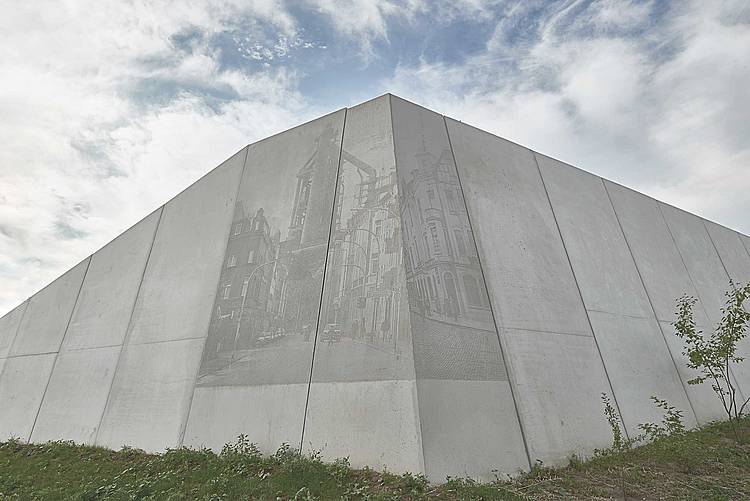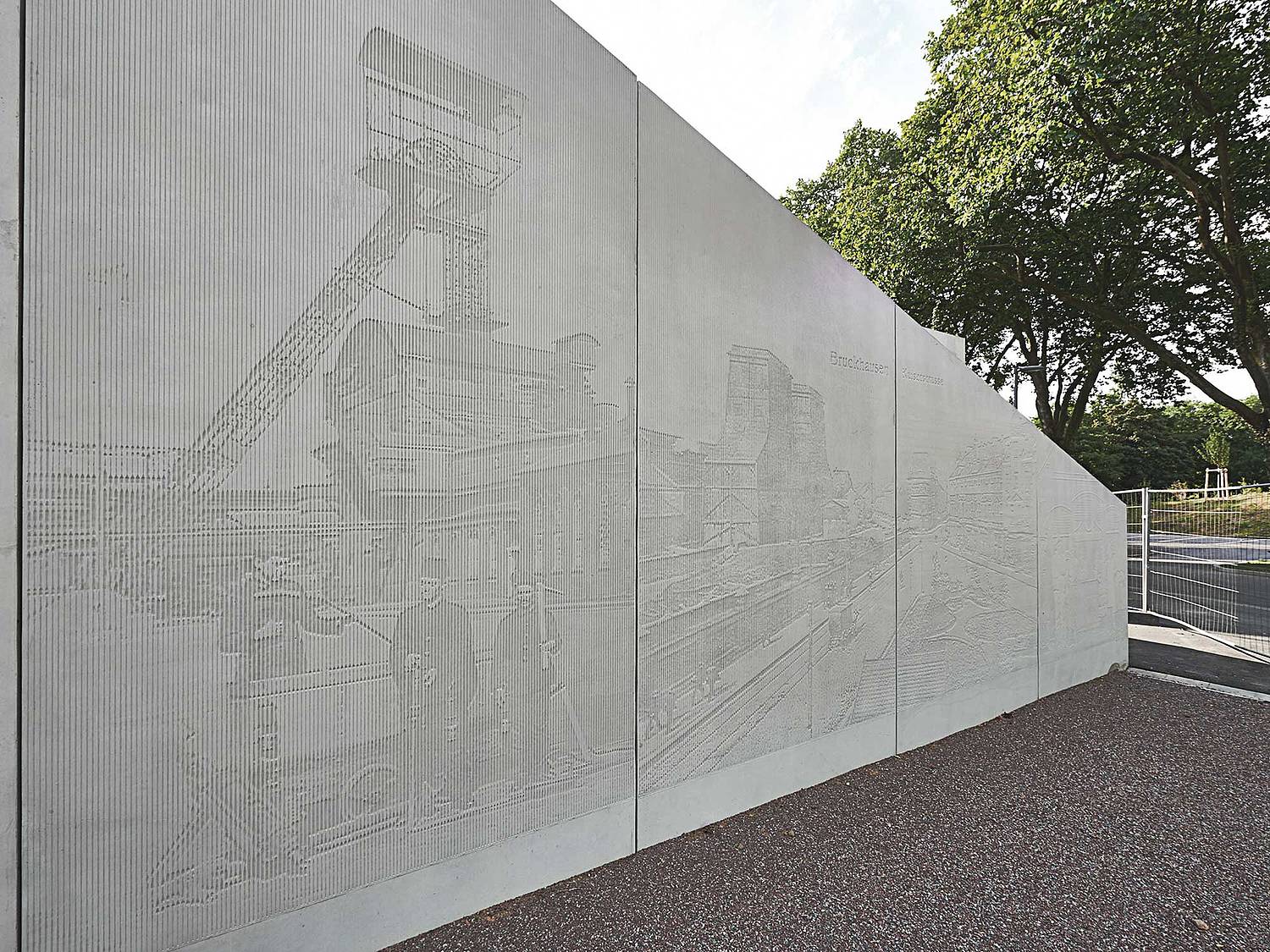Landscape project, Duisburg, Germany
Tatort-detective Horst Schimanski and Günter Wallraff’s novel “Ganz unten” popularized Duisburg Bruckhausen. A landscaping project is planned to add value to this rugged city district. Exposed concrete walls with historical photos are reminiscent of the neighborhood’s past.
Industrial and multicultural, at times a social problem area - Duisburg Bruckhausen is often associated with these descriptions. The city district Duisburger Norden lies in direct proximity to the Thyssen steel plant, the second-largest in the world. Workers and migrants live here, there are no wealthy neighbors in Duisburg Bruckhausen. The image of the city district was shaped long-term when Günter Wallraff worked at Thyssen, dressed up as a Turk for his book “Ganz Unten”. Duisburg Bruckhausen also served as a set for the rough Ruhr area in the Tatort films with the TV detective Horst Schimanski.
To upgrade the city district, the city approved an extensive refurbishment measure. In 2008, the transformation into the landscape construction Greenbelt began: Residential buildings were dismantled and the park was subsequently created. The Greenbelt is meant to separate the connection to the industry and serve as a natural place to relax for the residents. The city planners constructed a 500-meter long park with a total area of 90,000 sqm. Half of the construction cost of 72 million euro were covered by Thyssen Krupp, the other half was paid by the EU, the Federal Republic and the State of North Rhine-Westphalia.
The steel structures and chimneys of the adjacent plant also tower over the green space, which is thus characterized by them. Therefore, a sluice provides a connection between the city district and the green space and has a noise-reducing function at the same time.
The angled supporting walls of the sluice were fashioned with exposed concrete. The precast concrete elements were provided by the precast plant Fuchs, they were fashioned with the photo engraving formliners by RECKLI: With the help of a computer-assisted process, historical photos of the neighboring Thyssen plant were scanned and converted into a milling file. Using the digitized photo file, the CNC-mill created a positive cast, on to which the formliner was cast. The concrete elements were then cast on to the formliners at the Fuchs precast plant. The thus produced exposed concrete serves as a reference to the centuries of industrial history of the city district.

